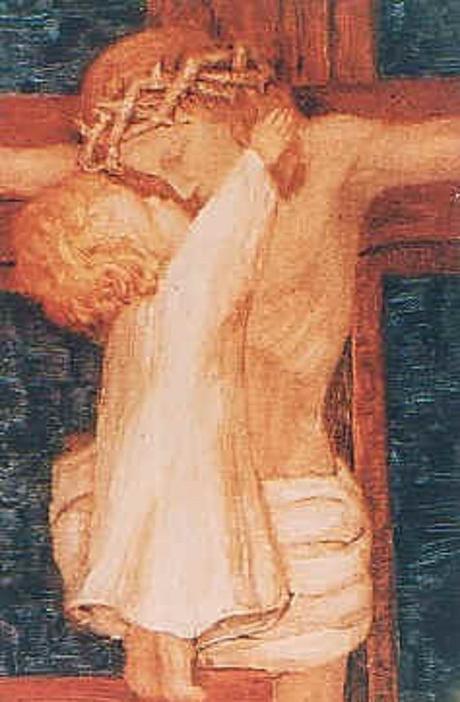Mark 10:45
The Son of Man came to serve
and to give his life as a ransom for many.

Hebrews 4:14-16
Brothers and sisters:
Since we have a great high priest who has passed through the heavens,
Jesus, the Son of God,
let us hold fast to our confession.
For we do not have a high priest
who is unable to sympathize with our weaknesses,
but one who has similarly been tested in every way,
yet without sin.
So let us confidently approach the throne of grace
to receive mercy and to find grace for timely help.
Millions of Americans suffer from chronic pain. In 2010, a poll by the American Osteopathic Association found that nearly 70% of Americans said they or someone they cared for had experienced pain.
The same poll found that 34% of Americans believed that the side effects of pain medications are worse than the pain itself.
But researchers have found pain reducers that are not opiates or pharmaceuticals. The website Cracked has an article on 6 things other than drugs which temporarily reduced pain. Beginning with the least, the six are money, eating, music, imagination, touch, and religious faith.
Researchers found that religious, specifically Christian, faith is the most powerful non-pharmaceutical pain reducer.
As reported by Gary L. Wenk, Ph. D., in Psychology Today:
In a recently published study in the journal Pain, scientists (Wiech and colleagues) measured pain perception in two groups of people, devout practicing Catholics and professed atheists and agnostics, while they viewed an image of the Virgin Mary or the painting of Lady with an Ermine by Leonardo da Vinci. Devout Catholics reported feeling more peaceful and compassionate when gazing upon a picture of the Virgin Mother. The devout Catholics also perceived electrical pulses to their hand as being less painful when they looked at Mary than when they looked at the lady in the painting by da Vinci. In contrast, the atheists and agnostics derived no pain relief while viewing either picture.… MRI scans demonstrated that the Catholics’ pain relief was associated with greatly increased brain activity in a small area located on the bottom left of their right prefrontal cortex. In contrasts, the atheists and agnostics demonstrated no response in this brain area. There was already ample evidence to suggest that this brain region is involved in controlling our emotional response to sensory stimuli, such as pain. Perhaps this study has, in fact, now shown us the location of the placebo effect.
Much has been written about the value of the placebo effect in the practice of medicine, but how this effect emerges and whether it can be controlled are issues that not yet understood…. Numerous meta-analyses (which are later analyses of other researchers’ data) have shown that only the perception of pain can be statistically demonstrated to be influenced by our minds, which scientists refer to as the emergent property of our brains. The impressive influence of our thoughts and expectations on how we experience pain is a true placebo effect.
If gazing upon a painting of the mother of Jesus reduces pain, how much more powerful would fixing our eyes and minds on the suffering Christ on the cross. As St. Paul reminds us in his Letters to the Hebrews 4:
“For we do not have a high priest who is unable to sympathize with our weaknesses, but one who has similarly been tested in every way.”
In other words, no one better understands and empathizes with our suffering than Jesus. So, when you are wracked with pain or laboring under physical or emotional suffering, look to our Lord on the cross and ask for His help.
He always answers.

May the peace and love of our Lord Jesus Christ be with you!
~Eowyn

